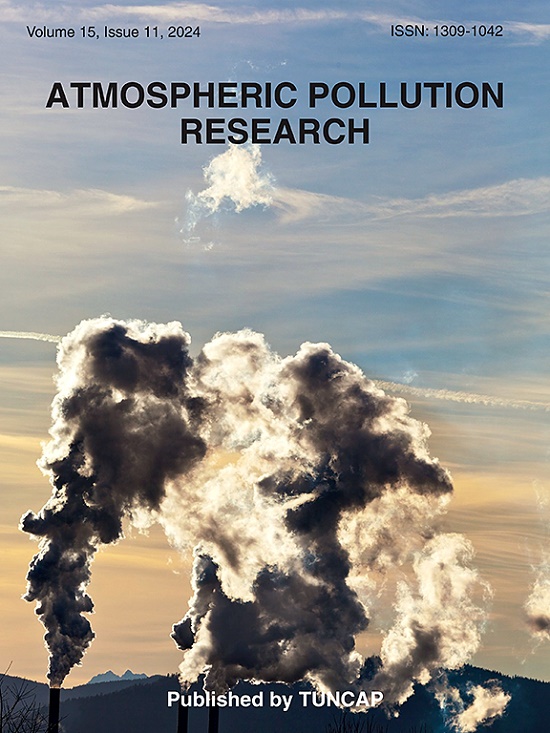东南亚泥炭地火灾中细颗粒和超细颗粒远程迁移的同步研究
IF 3.5
3区 环境科学与生态学
Q2 ENVIRONMENTAL SCIENCES
引用次数: 0
摘要
研究人员研究了印尼泥炭地火灾期间大气细颗粒物(PM1和PM2.5)和超细颗粒物(PM0.1)的物理和化学特征,并将其长距离输送到泰国南部,以进一步了解对东南亚地区的影响。印度尼西亚北干巴鲁的背景PM浓度大约是泰国南部合艾的1.5-3倍。雾霾事件期间,河艾地区的PM和PM结合的多环芳烃质量浓度在本底显著升高。合艾雾霾期间的多环芳烃特征与北干巴鲁相似。这表明印尼泥炭地火灾产生的气溶胶经过长途运输到达泰国南部。此外,化学质量平衡模型表明,在正常情况下,两个地点的PM0.1最主要的来源是车辆燃料燃烧。这与生物质燃烧是主要来源的PM1和PM2.5形成对比。另一方面,在雾霾事件期间,北干巴山PM0.1的主要来源显然是泥炭地火灾,占51 - 65%,而在Hat Yai,最主要的PM0.1来源是汽车燃料燃烧,占66%,尽管泥炭地火灾的贡献很明显(17%)。这与PM1和PM2.5形成对比,泥炭地火灾是主要来源,贡献了38 - 50%。本文章由计算机程序翻译,如有差异,请以英文原文为准。
Concurrent study of long-range transport of fine and ultrafine particles from peatland fires in lower Southeast Asia
The physical and chemical characteristics of atmospheric fine (PM1 and PM2.5) and ultrafine particles (PM0.1), during peatland fires in Indonesia and transported over a long distance to southern Thailand, were investigated to add more insight into the impact in lower Southeast Asia region. The background PM concentrations in Pekanbaru, Indonesia were approximately 1.5–3 times as high as those in Hat Yai, southern Thailand. The PM and PM-bound PAH mass concentrations in Hat Yai during the haze event were significantly increased over the background. The prominent PAH profiles during the haze event in Hat Yai showed a similar pattern to those in Pekanbaru. This suggested that the aerosol from the peatland fire in Indonesia was transported over long distances to southern Thailand. Moreover, the chemical mass balance model indicated that the most dominant source of PM0.1 at both sites during normal event was vehicle fuel combustion. This is contrast with PM1 and PM2.5 where the biomass burning was the major source. On the other hand, during the haze event, the main source of PM0.1 at Pekanbaru was clearly peatland fires, accounting for 51–65 %, whereas at Hat Yai, the most dominant source of PM0.1 was vehicle fuel combustion accounting for 66 % even though the contribution from peatland fires was noticeable (17 %). This is in contrast with PM1 and PM2.5, where peatland fires were the main source, contributing 38–50 %.
求助全文
通过发布文献求助,成功后即可免费获取论文全文。
去求助
来源期刊

Atmospheric Pollution Research
ENVIRONMENTAL SCIENCES-
CiteScore
8.30
自引率
6.70%
发文量
256
审稿时长
36 days
期刊介绍:
Atmospheric Pollution Research (APR) is an international journal designed for the publication of articles on air pollution. Papers should present novel experimental results, theory and modeling of air pollution on local, regional, or global scales. Areas covered are research on inorganic, organic, and persistent organic air pollutants, air quality monitoring, air quality management, atmospheric dispersion and transport, air-surface (soil, water, and vegetation) exchange of pollutants, dry and wet deposition, indoor air quality, exposure assessment, health effects, satellite measurements, natural emissions, atmospheric chemistry, greenhouse gases, and effects on climate change.
 求助内容:
求助内容: 应助结果提醒方式:
应助结果提醒方式:


